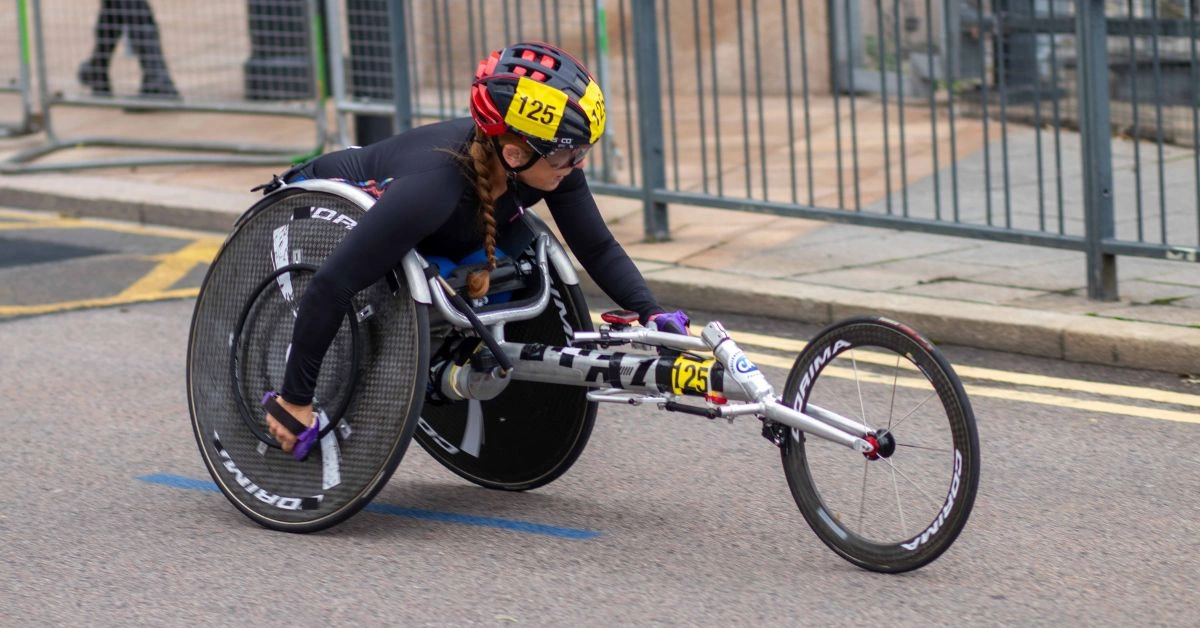Terratrike Maverick vs Trident Spike: Which Recumbent Trike Wins?
Recumbent trikes are becoming more popular among cyclists of all ages. They offer a comfortable, stable, and fun riding experience. Unlike traditional bicycles, these three-wheeled machines reduce strain on the back and joints.
Two of the most talked-about recumbent trikes are the Terratrike Maverick and the Trident Spike. Both are designed for comfort, efficiency, and easy handling. However, they have key differences that may make one better suited for certain riders.
Choosing the right recumbent trike can be overwhelming. There are many factors to consider, such as comfort, performance, durability, and price. A good trike should fit your lifestyle and riding needs while offering the best value for your money.
The Terratrike Maverick is a well-known entry-level recumbent trike. It is praised for its simplicity, adjustability, and solid build. It is often recommended for beginners who want a smooth and reliable ride.
On the other hand, the Trident Spike is a folding trike with a reputation for portability and versatility. It appeals to riders who need a compact and easy-to-store option. Many cyclists choose it for travel or limited storage space.
In this guide, we will compare these two trikes in design, performance, features, and overall value. By the end, you’ll have a clear understanding of which one is right for you. Whether you are a casual rider or a cycling enthusiast, this comparison will help you make an informed decision.
| Aspect | Terratrike Maverick | Trident Spike |
|---|
| Frame Material | High-tensile Steel | Aluminum |
| Frame Durability | Durable, smooth ride, but heavier | Lightweight, rust-resistant, less flexible |
| Weight | 42 lbs (19 kg) | 35 lbs (16 kg) |
| Portability | Non-folding, less portable | Folding frame, easy to store and transport |
| Seat Comfort | High-back mesh seat, adjustable, good lumbar support | Mesh seat, compact design, less padded |
| Seat Adjustability | Adjustable seat for reclining position | Less adjustability but comfortable for short rides |
| Aesthetics | Sleek, modern design with bright colors | Industrial, neutral tones, folding mechanism visible |
| Handling & Stability | Longer wheelbase, stable at higher speeds | Shorter wheelbase, quicker turns but less stable |
| Speed & Drivetrain | 1-speed or 8-speed drivetrain | 8-speed drivetrain for better versatility |
| Braking System | Mechanical disc brakes, reliable stopping power | Mechanical disc brakes, good in various weather |
| Suspension & Shock Absorption | Steel frame absorbs road vibrations better | Less road vibration absorption due to aluminum frame |
| Weight Capacity | 275 lbs (125 kg) | 250 lbs (113 kg) |
| Customization Options | Fenders, mirrors, electronic assist kits | Travel and storage accessories |
| Price Range | Typically lower for a sturdy, entry-level option | Mid-range, higher for portability and foldability |
| Best for | Beginners, long rides, various terrains | Portability, limited storage, travel |
Design and Build Quality
The design and construction of a recumbent trike affect its durability, comfort, and ease of use. Both models have unique features that set them apart. Let’s take a closer look at their frame, weight, seat comfort, and overall build quality.
Frame Material & Durability
One trike features a high-tensile steel frame, making it strong and long-lasting. Steel provides durability and a smooth ride, but it adds extra weight. This frame is built to handle daily use without losing stability.
The other option comes with an aluminum frame, which is lightweight yet sturdy. Aluminum resists rust better than steel, making it a good option for wet or humid climates. However, some riders feel aluminum frames are less flexible and absorb fewer road vibrations.
Weight & Portability
One model weighs around 42 lbs (19 kg), which is manageable for most riders. However, it does not fold, so transporting it can be a challenge. If you have limited space, you may need a dedicated storage area or a vehicle rack.
The second option is much lighter at 35 lbs (16 kg) and features a folding frame. This makes it easy to store in small spaces or transport in a car. If portability is a priority, the folding design has a clear advantage.
Seat Comfort & Adjustability
Comfort is one of the biggest reasons riders choose recumbent trikes. One model comes with a high-back mesh seat, offering good airflow and lumbar support. The seat is adjustable, allowing riders to find the perfect reclining position.
The other option also features a mesh seat, but it has a more compact design. Some riders find it less padded than its competitor. If you plan on longer rides, extra padding may offer better support.
Aesthetics & Styling
One trike has a sleek and modern look with a minimalistic frame design. It is available in a few standard colors, often favoring bright, eye-catching tones. The brand focuses on simplicity while maintaining an attractive appearance.
The second model has a slightly more industrial look due to its folding mechanism. It is usually available in darker or neutral colors, appealing to riders who prefer a more understated style. While both trikes look great, personal preference will play a big role in this choice.
Both options are built to last, but their differences in frame material, weight, comfort, and styling can impact your decision. If you value durability and comfort, the steel frame model is a great option. If you need lightweight portability, the aluminum folding frame may be the better choice.
Performance & Ride Quality
A good recumbent trike should provide a smooth, stable, and enjoyable ride. These two models differ in how they handle, accelerate, and absorb shocks. Let’s compare them in terms of stability, speed, braking, and overall comfort.
Handling & Stability
One option is designed for easy handling and a steady ride. Its longer wheelbase helps with balance, making it feel stable even at higher speeds. Beginners will appreciate how secure it feels on turns and uneven surfaces.
The other model is also stable but has a shorter wheelbase, which makes it slightly more responsive. It turns more quickly but may feel a bit twitchy at first. Experienced riders may enjoy its maneuverability, while beginners might need time to adjust.
Speed & Gear System
One trike comes with a single-speed or 8-speed drivetrain, depending on the version. The 8-speed model offers better versatility for climbing hills or riding on different terrains. However, it is not built for high speeds or racing.
The other option features a wide-range 8-speed drivetrain with smooth gear shifting. It allows for better control on inclines and flat roads. Riders looking for a faster and more efficient ride may prefer this gearing system.
Braking System
Both models use mechanical disc brakes, which provide reliable stopping power. They are easy to maintain and work well in most weather conditions. However, one trike’s braking system may feel more sensitive due to its lighter weight.
Suspension & Shock Absorption
Neither model has a built-in suspension system. This means they rely on their seat design and frame flexibility for comfort. One trike’s steel frame absorbs road vibrations better, making it more comfortable on rough paths.
Weight Capacity & Rider Suitability
One option has a weight capacity of 275 lbs (125 kg), making it suitable for most riders. Its adjustable seat and stable frame make it a great option for larger or taller individuals.
The second trike has a slightly lower weight capacity of 250 lbs (113 kg). If weight capacity is a concern, the first model may be the better option.
Features, Accessories, and Customization
A great trike should offer useful features and the ability to customize. Both models have unique accessories and upgrade options. Let’s compare what each offers in terms of standard features, storage, and customization.
Standard Features
One trike comes with a mesh seat, mechanical disc brakes, and an 8-speed drivetrain. The other includes a folding aluminum frame, mesh seat, and an 8-speed drivetrain. Both have well-equipped base models for everyday riding.
Upgrade Options
The steel frame model has more customization options, including fenders, mirrors, and electronic assist kits. The folding frame model has fewer drivetrain upgrade options but allows for storage and travel accessories.
Conclusion
When choosing between these two recumbent trikes, the decision ultimately depends on your personal preferences and needs. If you prioritize durability, comfort, and a stable ride, the model with the steel frame may be the ideal choice. Its robust construction and better shock absorption make it a great option for riders who enjoy long rides on various terrains.
On the other hand, if portability and ease of storage are important to you, the folding aluminum-frame model stands out. Its lightweight design, compact foldability, and ease of transport make it a perfect option for riders who need a convenient and space-saving solution.
Both trikes offer great value with solid features, customizable upgrades, and reliable performance. Understanding your priorities—whether it’s comfort, performance, or portability—will help you select the right recumbent trike for your cycling needs.
Which recumbent trike is better for beginners?
The model with the steel frame is great for beginners due to its stable handling, longer wheelbase, and smooth ride on various terrains. It’s easy to get accustomed to and provides a solid foundation for new riders.
How do the seats compare in comfort?
Both trikes have mesh seats, but the steel-frame model offers better padding and lumbar support, making it more comfortable for longer rides. The folding aluminum frame model has a more compact seat design, which may feel less padded.
Is the folding trike really easier to transport?
Yes, the folding aluminum frame model is much lighter and can be folded for easy storage or transport. It’s ideal for riders who need a portable trike that can fit in tight spaces or be carried in a car.
Which trike performs better on hills?
The steel-frame model offers better control on inclines due to its 8-speed drivetrain, making it suitable for varied terrains, including hills. The folding frame model also features an 8-speed system but may feel a bit more responsive on flat roads.
Are there any customization options available?
Yes, both models offer customization options, but the steel-frame trike has more upgrade options, including fenders, mirrors, and electronic assist kits. The folding frame model focuses more on portability and travel-related accessories.
Which trike is more durable?
The steel-frame trike tends to be more durable due to its high-tensile steel construction, which is better suited for handling daily use and rough terrains. The aluminum-frame model is lightweight and rust-resistant but may not be as robust as the steel-frame version.
What’s the weight capacity of each trike?
The steel-frame model has a weight capacity of 275 lbs (125 kg), making it more suitable for larger riders. The folding aluminum-frame model has a slightly lower weight capacity of 250 lbs (113 kg).







